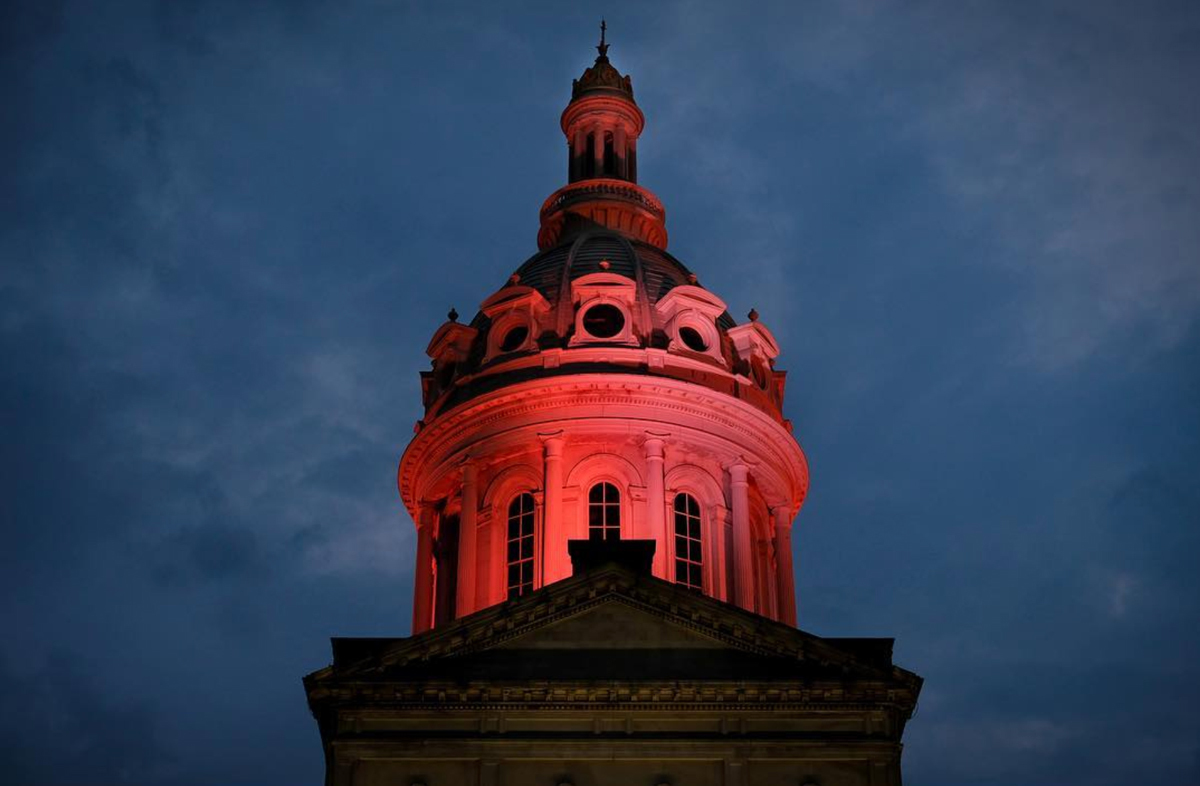
Don’t be alarmed when you see the dome of City Hall illuminating red on Friday night. Baltimore is one of 130 landmarks in the U.S. and Canada to participate in a show of support for the sixth biennial Stand Up To Cancer (SU2C) “roadblock” telecast airing on Friday, September 7. Each building will light up in a combination of SU2C’s signature colors—orange, red, yellow, gray, or white.
This year’s show is especially significant because it commemorates the organization’s 10-year anniversary of raising funds and awareness for cancer research.
“It really shows support and unity,” said Sung Poblete, president and CEO of SU2C. “It’s a visual connection. One in three Americans will be touched by cancer in their lifetime. This is one way of all of us standing together and fighting for those that we love.”
Since 2008, SU2C has been able to support more than 180 clinical trials with 1,500 scientists to help more than 12,000 cancer patients. The telecast is a way to secure a large number of funds for continuing research in the more than 180 medical institutions it works with—including Baltimore’s Johns Hopkins University.
Maryland resident Bob Siskind, who was diagnosed with stage one pancreatic cancer in 2017, is grateful for the work that SU2C has done. There was a study that was funded by the group that saw significant tumor reduction in patients with stage-four pancreatic cancer and decided to see how well it would work on someone less terminal. Siskind, who says this type of cancer runs in his family, agreed to try it out.
“They removed half my pancreas, my spleen, and the tumor,” he said. “Then I did the chemotherapy and the immunotherapy was the experimental trial that was supposed to hopefully prevent the cancer from coming back. I’m very optimistic. Funding like that doesn’t grow on trees and Stand Up To Cancer came through with the money to run the study and it enabled me to get well.”
Poblete says that cases like Siskind’s are the reason why the organization and this telecast are so important. Unlike typical grants that are specific to one scientist or institution, SU2C has no boundaries or borders for its scientists allowing them to work across multiple institutions.
“The brightest minds are not all at one institution,” Poblete said. “Having no boundaries to seek out the best ideas and having the best and the brightest work together, it’s a dream team approach.”
This year’s telecast will also feature a new pre-show digicast at 7 p.m. on YouTube, Facebook, and Twitter inviting people to join in the conversation online. The hour-long show will feature cancer survivors, celebrities, and exclusive access to some behind-the-scenes of the live show.
During the “one night to save lives,” Poblete hopes to raise a significant amount of money—no number was specified because she believes that any amount counts. She says she’s grateful and humbled by all of the support from each state participating in the illumination as well as all who donate to advance the research to find a cure for cancer.
“It’s about all of us coming together,” she said. “One-hundred percent of the funds raised go towards our innovative cancer research—to support brilliant scientists who can make these amazing discoveries. We hope to hit a big number this year and we’re keeping our fingers crossed.”
